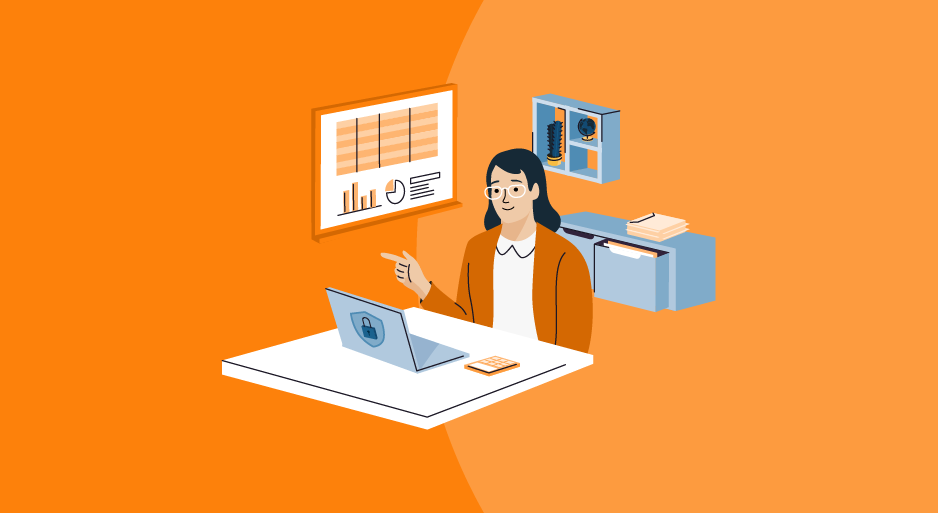For many accounting firms and companies, financial data leaks are a significant issue. If your company’s sensitive financial information is not safe and secure, you can suffer from financial and intellectual losses, brand damage, and even lost customers.
Unfortunately, many businesses still grapple with securing their delicate financial information. A recent survey found that 35% of consumers do not trust organizations to adequately protect their sensitive information, and 45% say they will not do business with an organization that has suffered a cyberattack.
Ensuring the security of your clients’ data can be difficult, especially if you don’t know where to start. In this blog post, we will discuss some tips on how to keep financial information safe and secure.
What is sensitive financial information?
Sensitive financial information is data attached to an individual or company in relation to their monetary transactions. It is important to classify your business’ data since its level of sensitivity may vary. For example, if your firm name, location, or employee count is compromised, you might not see any consequences. However, your firm will suffer if your revenue, loans, customer data or bank details are leaked.
- Credit card numbers
- Bank account information
- Social security numbers
- Transaction and income information
- Passwords or personal identification number (PIN)
Having identified the most crucial data to secure for your business, the following tips will help you keep it safe.
4 ways to secure your business’s financial information
Check out these helpful ways to help kick-start your financial data protection:
1. Create strong passwords and change them often
To begin, create strong passwords that are difficult to remember. Passwords are the most likely means for others to access your sensitive financial data. A strong password protects your data from unauthorized access. Changing your password regularly, preferably every three months, also helps to keep your information safe as it makes it harder for someone to hack into your system.
To create a strong password, you need to:
- Use a unique password that contains symbols, numbers, and letters.
- Avoid using birthdays, names, and next of kin or any information that can be easily accessed from your records.
- Use different passwords on different accounts and websites.
- Don’t save your passwords on your computer.
You can also use password managers that can generate alphanumeric passwords and store them in an encrypted vault.
2. Use multifactor authentication
Multifactor authentication (MFA) is an extra layer of security used to confirm a user’s identity by requesting additional information beyond the password.
This level of security is critical if your password has been compromised in a data breach. Even if an attacker learns your password, they won’t be able to access your account since they don’t have the second factor, which is usually a text message code.
Multifactor authentication is implemented in different ways, including the use of hardware tokens, one-time passcodes (OTP), and push notifications. Some software has built-in MFA, while others require you to use a third-party method.
3. Update your software regularly
Your electronic equipment, such as computers and phones, probably house some of your most sensitive financial information. If you aren’t updating your software (which includes applying security patches that fix vulnerabilities), you’re leaving your company open to hackers.
By regularly updating your software, you reduce the risk of your company being exposed to software security flaws. There should be a company-wide policy to update all software within a reasonable timeframe.
Another way of implementing this is by using a centralized software management system that can be used to trigger an update on workplace devices.
4. Be careful with your emails
Email correspondence is one of the most common methods used to steal sensitive financial information from businesses. Attackers do this by sending phishing emails that appear to come from a legitimate source, such as your bank. When you open the email and click on the link, you’re taken to a fake website that looks like the real thing. The attackers can then use this opportunity to steal your login credentials or infect your device with malware.
It is important to train all employees to be able to identify phishing emails. They should also know how to report suspicious emails so that you can take appropriate action.
Four things employees should know:
- Never open attachments from unknown senders.
- If an attachment looks suspicious, even if it’s from a known sender, you should contact the sender to confirm that they sent it.
- Be careful about clicking on links in emails. If you’re unsure about a link, you can hover over it with your mouse to see where it’s taking you.
- Never reply to emails asking for your personal or financial information, even if they look legitimate.
Need Any Technology Assistance? Call Pursho @ 0731-6725516





